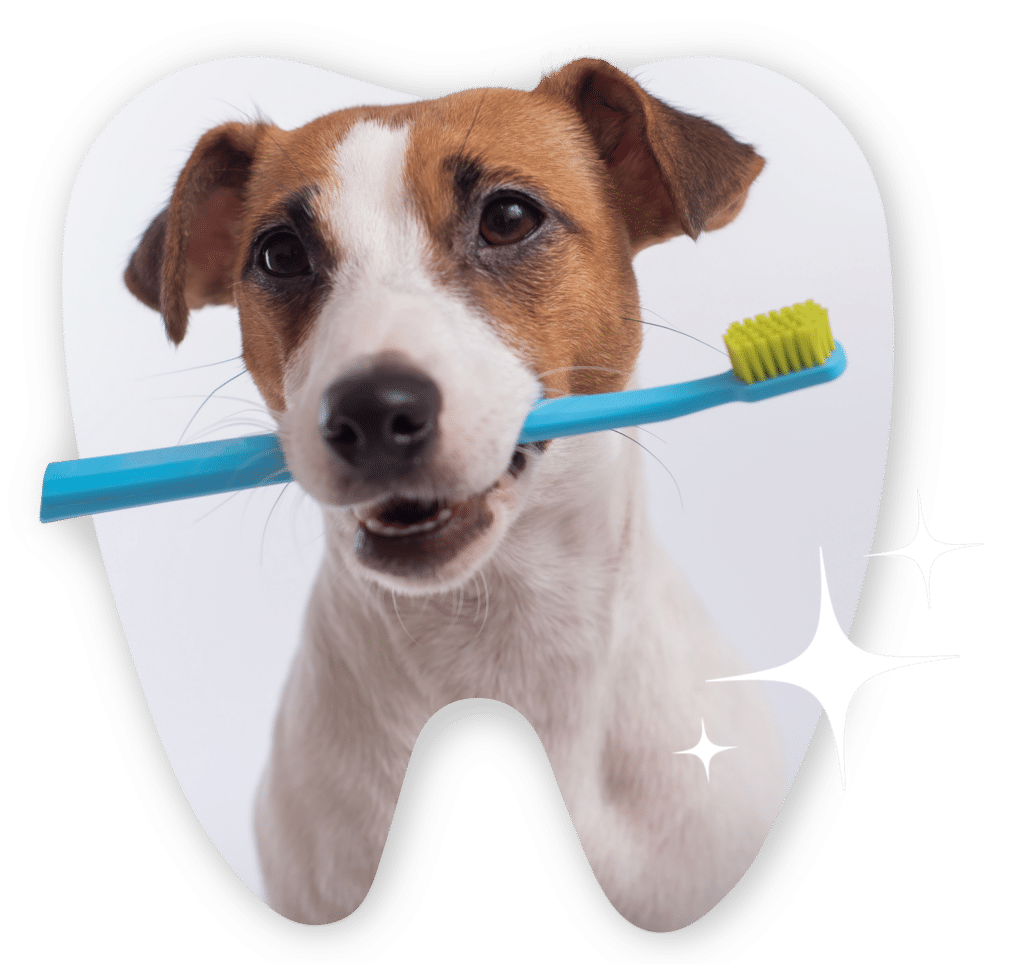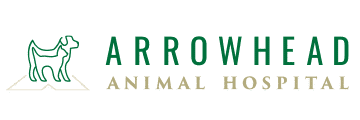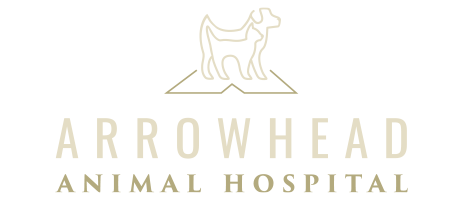Dental Days Deal
$100 off Dental Cleanings
For new and existing clients!
Call (303) 469-1616 to schedule a cleaning today!

At Arrowhead Animal Hospital, we are dedicated to optimizing the health of all pets that we treat, which is why we recommend having your dog’s or cat’s teeth checked and professionally cleaned at least once a year. Dental care is essential to your pet’s health and quality of life, as advanced dental disease can lead to other health serious issues, along with chronic pain and discomfort. The American Veterinary Dental Society reports that about 80% of dogs and 70% of cats begin showing signs of oral disease by the time they are three years old.
Or call us at (303) 469-1616.
Consistent home dental care
in addition to routine professional examinations and cleaning with a veterinarian can prevent dental disease from starting or advancing.
How to Tell If Your Pet Needs Dental Care
Signs of dental disease or infection can be subtle. If your pet is experiencing or showing any of the following signs at home, consult your veterinarian and schedule a dental exam and/or teeth cleaning:
Bad breath
Broken, loose, or missing teeth
Discoloration or tartar build up
Excessive chewing or drooling
Reduced appetite or inability to chew
Swelling and/or bleeding in or around the mouth

Pet dental care FAQs
Canine dental cleaning has several components. Our doctors will explain these components to you in great detail before your dog’s first procedure takes place. Keep in mind that communication and great knowledge of canine dental processes and procedures are telltale signs of a professional and caring animal dentistry operation. The components of a professional canine dental cleaning include:
- General anesthesia
- Pre-anesthesia blood tests
- Possible antibiotic treatment
- Tooth scaling
- Tooth polishing
- Possible tooth extraction or other procedure
Due to the nature of cleaning a dog’s teeth, general anesthesia will be necessary. This prevents sudden movements by the dog and it minimizes pain. Before anesthesia can be administered, the doctor will take a series of pre- anesthesia blood tests to ensure that liver and kidney function are healthy. If the pet already has an infection, antibiotic treatment may be necessary before scaling and polishing can be performed. Tooth scaling is performed by hand using ultrasonic cleaning equipment to remove tartar buildup above and below the gum line. The final step in the process is tooth polishing which helps to prevent plaque build-up.
During the course of cleaning your dog’s teeth, the veterinarian may come across a tooth that is in such disrepair, that the tooth has to be extracted.
It is important to take your dog to the doctor for regular dental checkups to ensure the best dental care. Depending on age, you should take your dog to the dentist every six months. Dogs over three years of age might benefit from twice yearly cleanings. Just think, plaque and tartar can begin forming in less than six hours after teeth have been cleaned.
This includes an exam, preliminary bloodwork, IV fluids, and full mouth digital xrays. After the initial cleaning and evaluation has taken place, a new estimate will be created for any necessary extractions and/or medications.
A basic dental cleaning procedure at our hospital varies depending on the size of your pet. The basic procedure includes anesthesia & cleaning of the teeth. It does not include pre-anesthetic blood testing, pain medication, dental radiographs, extractions, bonded sealants, or antibiotics. Oftentimes, dental disease can be insidious and much worse than it may appear on the surface.
Therefore, it is impossible to accurately estimate what each individual pet may require until it is anesthetized and a thorough cleaning and exam has been performed. At that time, we will contact you to discuss what further treatment (if any) may be necessary, and estimate costs for you at that time.
Please make an appointment to discuss costs with one of our veterinarians if you have further questions.
- General exam before anesthesia, +/- pre-anesthetic blood testing
- Intravenous catheter & fluids
- Oral exam under anesthesia
- Subgingival (below the gumline) scaling, root planning, curettage where indicated
- Tooth polishing
- Irrigation
- Fluoride application
- Post-cleaning exam and radiographs if needed
- Dental charting for the medical record
- Therapy (extractions, bonded sealant) if necessary
- Home care instructions
- No-fee follow-up appointment to monitor healing after extractions if necessary
Paying close attention to your pet’s dental care on a daily basis can prevent periodontal disease. The main culprit in periodontal disease is tartar (calculus). When tartar accumulates on the teeth, it causes the gums to recede around the base of the tooth. This leads to infection and the gums recede even more. If left untreated, the infection can spread into the tooth socket. This causes the tooth to loosen and fall out.
To prevent tartar buildup there’s nothing better than good old-fashioned tooth brushing. Your doctor will provide you with the best home dental program you’re your pet. This will include a special brush, special toothpaste, instructions on how to brush your pet’s teeth, and a special diet, if necessary. It is important to note that you should never use human dental products on a pet. Human dental products such as toothpaste are not meant to be swallowed. Human toothpaste contains sodium, which can be irritating your pet’s system. In addition to regular brushing at home, you can also use special toys that help control plaque buildup, and there are a number of dental diets that are specifically designed to help reduce tartar buildup. Before feeding your pet a special diet, you should always discuss the options with a veterinary professional.
Anesthesia is necessary when performing dental cleaning. It provides three important functions: immobilization in order to clean below the gum line and perform dental procedures (radiographs, extractions, etc.) as needed, pain control, and the ability to place a tube into the windpipe so bacterial products do not enter the respiratory system.
We take every precaution to ensure safe anesthesia. We use the safest of anesthetic agents, and dogs & cats are given pre-operative tests depending on their age and condition to qualify them for anesthesia. Finally, pets are monitored while anesthetized with EKG cardiac monitors, non-invasive blood pressure units, temperature monitors, respiration monitors, and pulse oximeters. It is important to remember, however, that anesthesia has its risks in even the most healthy patient, though the risk may be minimal.
Dental disease occurs below the gum line. By removing calculus from the tooth, you are not removing disease below the gum line. In order to thoroughly help your pet, plaque & calculus must be removed from below the gum line.
It depends on the degree of plaque & tartar accumulation. Monthly, you need to examine your pet’s teeth. Look for an accumulation of yellow or brown material at the area where the tooth meets the gumline, especially over the cheek teeth and canines.
Once you notice plaque or tartar accumulation, it is time for a professional cleaning. Do not wait; waiting can lead to more severe dental disease, possibly resulting in the need for more extensive dental work.
Bacteria attach to the tartar, causing irritation of the gum tissues (aka gingivitis). When treated, the inflammation will resolve. When gingivitis is left untreated, it will progress to infection, bone loss, and eventually tooth loss; this process is known as periodontitis, which is incurable.
The intervals between teeth cleaning procedures will depend on how often you can brush your pet’s teeth. Once or twice daily is optimal. If you cannot brush the teeth, your pet may need dental clean.


